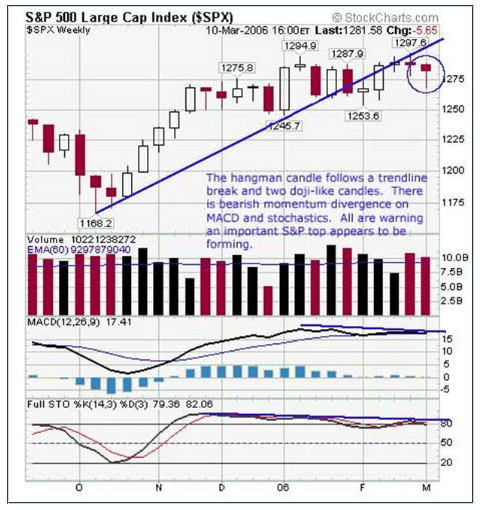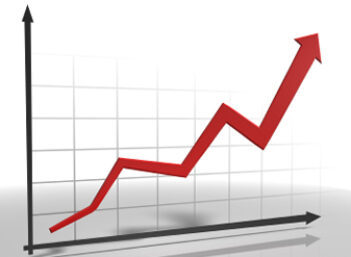What is a Hangman Candlestick?
The hangman candlestick has a very long shadow and a very small real body. Typically, it has no upper shadow (or at the very most, an extremely small one). To be an official hangman, the lower shadow must be at least twice the height of the real body. The larger the lower shadow, the more significant the candle becomes.
How Does a Hangman Candlestick Work?
The hangman candlestick -- so named because it looks like a person who has been executed with legs swinging underneath -- always appears after an extended uptrend. The hangman occurs when traders, after seeing a sell-off, rush in to snap up stocks at bargain prices. To their dismay, they often subsequently find that stocks could have been bought at much cheaper levels.
As with all candles, the 'rule of two' applies. That is to say, a single candle may give a strong message, but one should always wait for confirmation from another indicator before taking any trading action. However, it may not be necessary to wait an entire trading day for this confirmation. When it comes to the hangman, for example, confirmation may be a gap down the next day. The chart below shows a weekly hangman candle in the S&P 500. note the bearish momentum divergence in the MACD and stochastics indicators, a sign that the market is losing power on rallies.

Why Does a Hangman Candlestick Matter?
Recognition of the hangman candlestick should be an integral part of all traders' visual identification skills. When combined with moving averages and indicators, this candle can warn of an important trend reversal.



